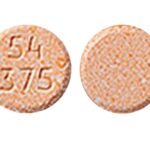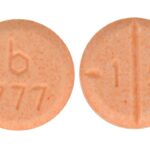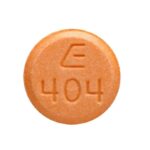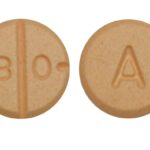Orange 153 Pill: Uses, Dosage, Side Effects, Abuse
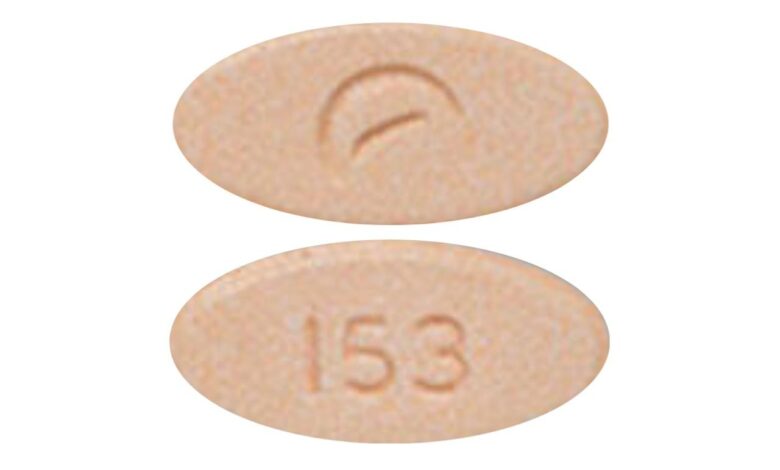
The orange, elliptical / oval pill with the imprint 153 and (Actavis) Logo has been identified as Buprenorphine Hydrochloride (Sublingual) 8 mg supplied by Actavis Pharma, Inc.. Buprenorphine is a medication approved by the Food and Drug Administration (FDA) to treat opioid use disorder (OUD) as a medication-assisted treatment (MAT). As with all medications used in MAT, buprenorphine should be prescribed as part of a comprehensive treatment plan that includes counseling and other behavioral therapies to provide patients with a whole-person approach.
Buprenorphine is the first medication to treat OUD that can be prescribed or dispensed in physician offices, significantly increasing access to treatment. The Drug Addiction Treatment Act of 2000 (DATA 2000), the Comprehensive Addiction and Recovery Act (CARA) and the Substance Use-Disorder Prevention Opioid Recovery and Treatment for Patients and Communities (SUPPORT) Act allows qualified practitioners to dispense or prescribe buprenorphine for the treatment of opioid use disorders (OUD) in settings other than opioid treatment programs (OTP), upon completion of specialized training.
Before taking this medicine
- You should not use this medicine if you are allergic to buprenorphine, or:
- if you have used another narcotic drug within the past 4 hours.
- To make sure buprenorphine is safe for you, tell your doctor if you have ever had:
- methadone treatment;
- breathing problems, sleep apnea;
- abnormal curvature of the spine that affects breathing;
- liver disease (especially hepatitis B or C);
- kidney disease;
- enlarged prostate, urination problems;
- a head injury or brain tumor;
- alcoholism, hallucinations, mental illness; or
- problems with your stomach, gallbladder, adrenal gland, or thyroid.
If you use buprenorphine while you are pregnant, your baby could become dependent on the drug. This can cause life-threatening withdrawal symptoms in the baby after it is born. Babies born dependent on habit-forming medicine may need medical treatment for several weeks.
Buprenorphine can pass into breast milk and may cause drowsiness, and breathing problems in a nursing baby. Ask your doctor about any risk.
Buprenorphine is not approved for use by anyone younger than 18 years old.
How should I take buprenorphine sublingual?
Use buprenorphine exactly as it was prescribed for you. Follow the directions on your prescription label and read all medication guides. Your doctor may occasionally change your dose. Never use buprenorphine in larger amounts, or for longer than prescribed.
Buprenorphine sublingual is usually taken at the start of treatment for addiction. Most people are later switched to another medicine that contains buprenorphine (Bunavail, Sublocade, Suboxone, Zubsolv).
You may receive your first doses of buprenorphine sublingual in a hospital or clinic setting until your condition improves.
Never share opioid medicine with another person, especially someone with a history of drug abuse or addiction. MISUSE CAN CAUSE ADDICTION, OVERDOSE, OR DEATH. Keep the medication in a place where others cannot get to it. Selling or giving away opioid medicine is against the law.
Use dry hands when handling the tablet. Place the tablet under your tongue and allow it to dissolve with your mouth closed. Do not chew the tablet or swallow it whole.
If your doctor has prescribed more than 2 tablets per dose, place the correct number of tablets under your tongue at the same time and allow them to dissolve completely.
Do not eat or drink anything until the tablet or film has completely dissolved in your mouth.
You may need frequent blood tests to check your liver function.
If you need surgery, tell the surgeon ahead of time that you are using buprenorphine.
Never crush or break a buprenorphine pill to inhale the powder or mix it into a liquid to inject the drug into your vein. Doing so could result in death.
Any medical care provider who treats you should know that you are being treated for opioid addiction, and that you are taking buprenorphine sublingual. Make sure your family members know how to provide this information in case they need to speak for you during an emergency.
Do not stop using buprenorphine suddenly, or you could have unpleasant withdrawal symptoms. Ask your doctor how to safely stop using this medicine.
Store at room temperature away from moisture and heat. Keep track of your medicine. Buprenorphine is a drug of abuse and you should be aware if anyone is using your medicine improperly or without a prescription.
Do not keep leftover opioid medication. Just one dose can cause death in someone using this medicine accidentally or improperly. Ask your pharmacist where to locate a drug take-back disposal program. If there is no take-back program, flush the unused medicine down the toilet.
What happens if I miss a dose?
Take the medicine as soon as you can, but skip the missed dose if it is almost time for your next dose. Do not take two doses at one time.
What happens if I overdose?
Seek emergency medical attention or call the Poison Help line at 1-800-222-1222. A buprenorphine overdose can be fatal, especially in a child or other person using the medicine without a prescription.
Overdose symptoms may include extreme drowsiness or weakness, cold or clammy skin, pinpoint pupils, slow heart rate, weak pulse, very slow breathing, or coma.
What are the side effects of 153 pill?
The following side effects have been reported by at least 1% of people taking this medication. Many of these side effects can be managed, and some may go away on their own over time.
Contact your doctor if you experience these side effects and they are severe or bothersome. Your pharmacist may be able to advise you on managing side effects.
• constipation
• cough
• diarrhea
• dizziness
• drowsiness
• dry mouth
• headache
• inability to fall asleep or remain asleep
• increased sweating
• loss of appetite
• nausea
• redness and itching at the site of application
• vomiting
• weakness or loss of strength
Although most of the side effects listed below don’t happen very often, they could lead to serious problems if you do not seek medical attention.
Check with your doctor as soon as possible if any of the following side effects occur:
• fast, slow or irregular heartbeat
• low blood pressure (dizziness or lightheadedness when rising from a sitting or lying position)
• symptoms of a bowel blockage (e.g., abdominal pain, nausea, severe constipation)
Stop taking the medication and seek immediate medical attention if any of the following occur:
• seizures
• severe breathing problems, shortness of breath, slow breathing, or shallow breathing
• symptoms of an allergic reaction (e.g. difficulty breathing or swallowing, hives, swelling of the face or throat)
• symptoms of too much medication (overdose: hallucinations, confusion, inability to walk normally, slow or weak breathing, extreme sleepiness, sedation, or dizziness, floppy muscles/poor muscle tone, cold and clammy skin)
Some people may experience side effects other than those listed. Check with your doctor if you notice any symptom that worries you while you are taking this medication.

